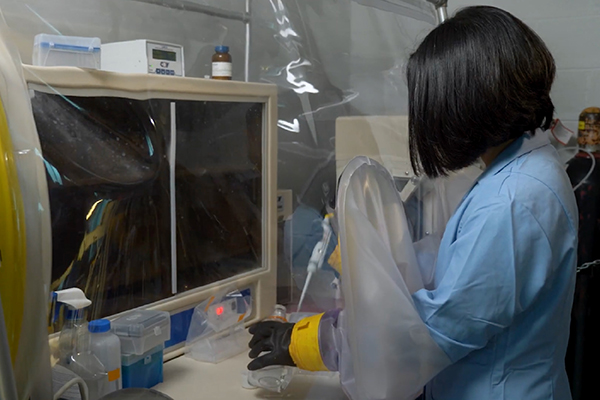Dayton Engineer

$752,000 USDA grant will help researchers prevent food contamination
A pair of University of Dayton researchers are part of a $752,000 grant from the U.S. Department of Agriculture to help prevent Listeria and other contamination in food.
"Despite our best disinfection efforts in food production and processing facilities, Listeria and other food-borne pathogens can survive extreme conditions, causing costly food recalls; or severe illness, hospitalization and even death," said Erick Vasquez, UD associate professor of chemical and materials engineering leading the project. "In some cases, Listeria can adhere to surfaces and grow into a biofilm structure resistant to many disinfectants and sanitizers."
Using nanotechnology — engineered structures, devices and systems between 1 and 100 nanometers, or 1,000 smaller than the thickness of a sheet of paper — responsive to magnetic fields, Vasquez and UD Associate Professor of Biology Yvonne Sun hope to develop a multi-functional "counter structure" with synthetic or natural disinfectants to prevent growth of the toxic biofilm.
Vasquez's expertise is in nanomaterials, especially how they interact with biomaterials on surfaces. Sun's research is in host-pathogen interactions and how environmental factors influence the ability of foodborne pathogens to cause infections.
Undergraduate and graduate students at UD and researchers at the University of Texas at San Antonio, who will share $282,000 of the award, also will be involved in the project.
Esteban E. Ureña-Benavides, a UTSA chemical engineering assistant professor, will assemble the structures, which Vasquez's team will coat with disinfectants to study how they adhere to the structures. Sun will grow Listeria biofilms in her lab to see how they respond to various conditions and biocides designed to kill the Listeria biofilms. Urena-Benavides’s lab, with Sun, will examine how well disinfection takes place without a magnetic field. Vasquez and Sun will examine magnetic fields on Listeria.
"Students at the University of Dayton need to know they will not exist in a silo. Multidisciplinary projects allow UD students to explore other disciplines outside their academic units. With this project, a biology student can perform research with world-class engineering faculty and an engineering student likewise with biology faculty, which broadens the scope of their UD education," said School of Engineering Dean Gül Kremer. "This is an amazing research project, led by a talented team of investigators across two universities, that will provide opportunities for our students to help solve real-world challenges and improve human health and safety."
For information about the program, supported by the USDA National Institute of Food and Agriculture, email Vasquez at evasquez1@udayton.edu.
For interviews, contact Shawn Robinson, associate director of news and communications, at srobinson1@udayton.edu.
